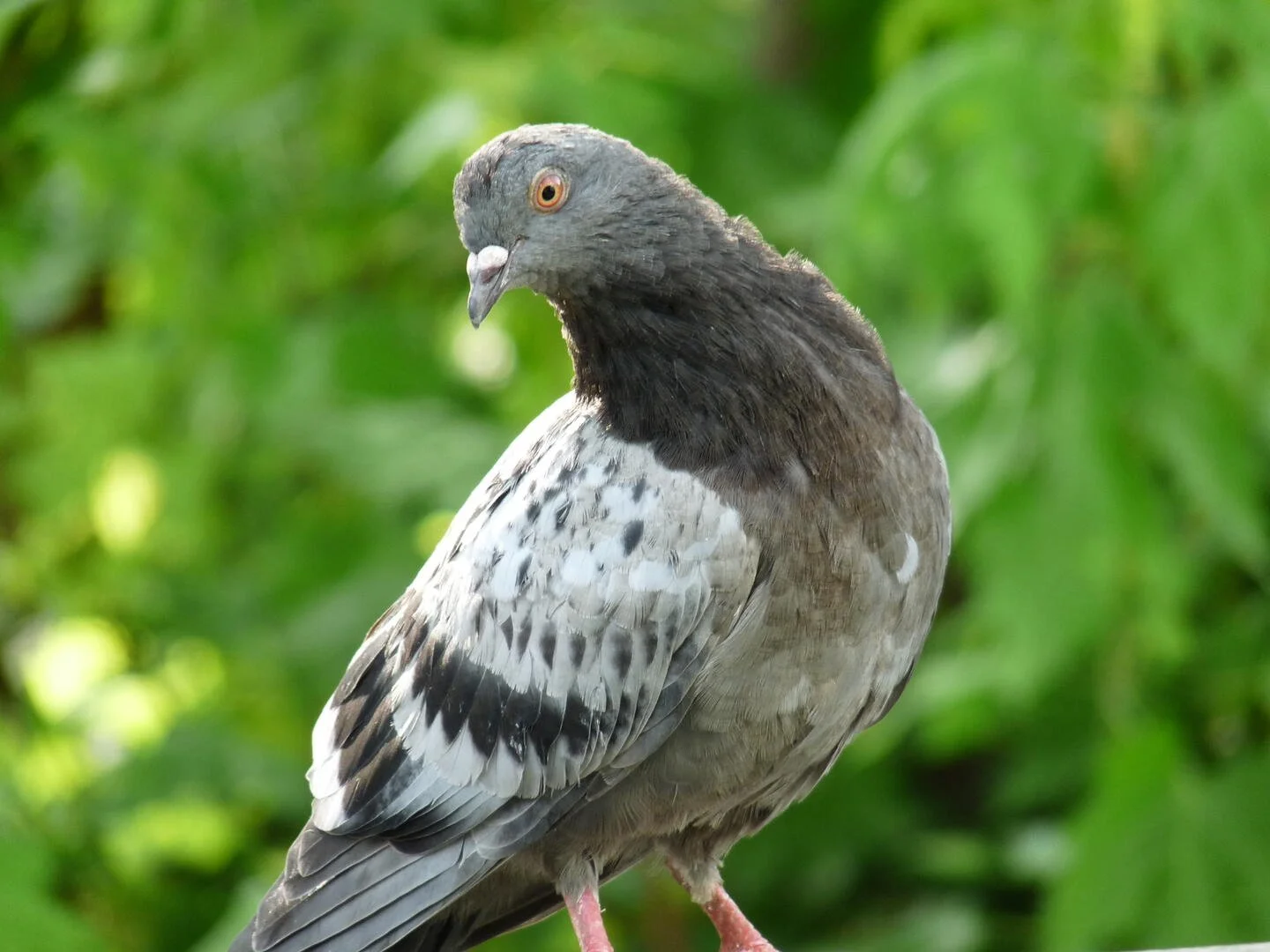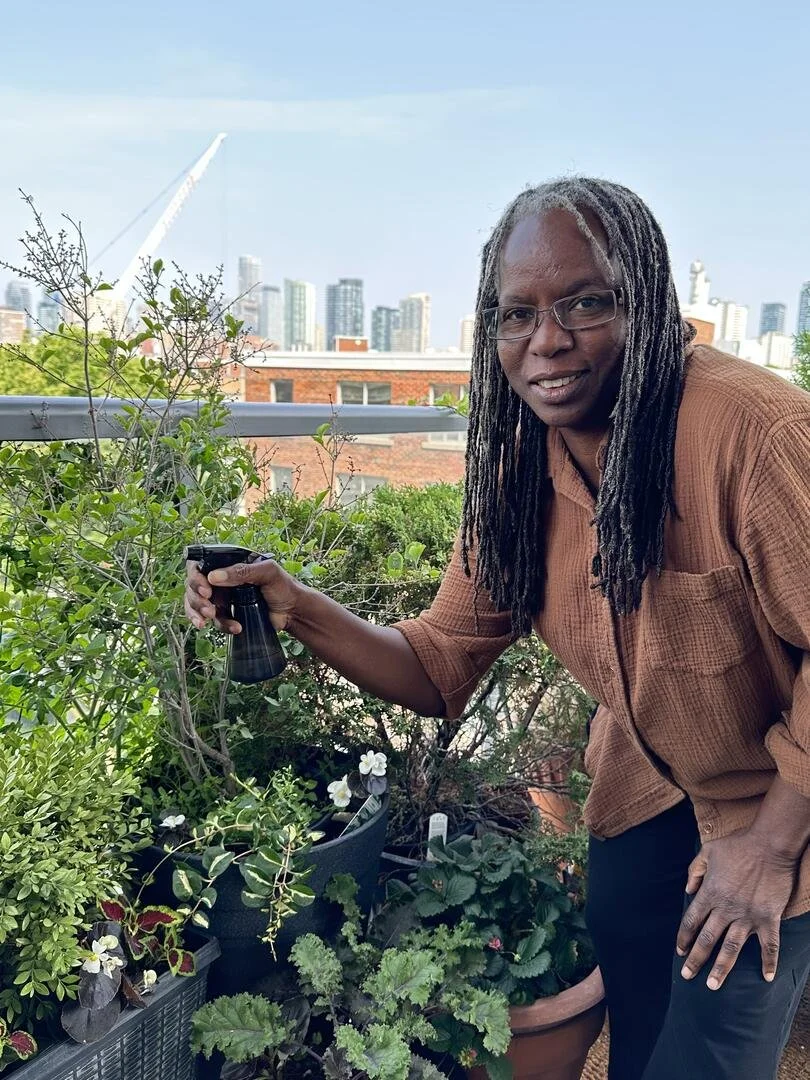A Recipe for Pigeons
By Safina Center Fellow Jacqueline L. Scott
Some pigeons escaped the farm and the plantation and became feral. They still liked to hang around humans, as they have done since they were domesticated thousands of years ago. As humans moved into cities, the pigeons followed them. © Jacqueline L. Scott
The pigeons are back and trying to sneak on to my apartment balcony to hide under the lounge chairs. Sometimes they succeed, when out of the corner of my eye, I miss the shadow of fluttering wings. But I will find them anyway - their soft cooing is a dead giveaway.
Last year the pigeons laid twin eggs. I drove away the pair of birds and collected the milky white coloured eggs. I thought of making scrambled pigeon eggs but did not want to meet yolks turned into beaks, wings and feathers, if I cracked them open. So, I solved the issue by putting them into the green recycling bin. The eggs might as well return to the earth - as we will all do eventually.
Then I was away for a few weeks and when I returned it was to face another pair of birds. Each time I shooed them away, or squirted them with water from a spray bottle, the birds hovered and came back as soon as I left the balcony - sixth floor glass and concrete, full sun.
The pigeons seemed anxious. Like new parents.
I had to triple check around the balcony. Under a lounger, on the less used shady northern side, on the bare concrete, behind a small blue compost bin which was shoved against the back wall, and filled with vegetable scraps from the kitchen, were two eggs. Hatched.
Big eyes, closed. Scrawny bodies covered in down. Huddled behind the container, trembling. Was it from cold or stress? Putting life in a plastic bag, and then down the apartment’s compost chute, seemed cruel. Leaving them to bake in the summer sun was just as bad. So, I put the container back where it was. Gently.
Pigeons and pigeon eggs are edible. That is why the birds were brought over to the Americas by the white setters. The pigeons were livestock on the wing. They first arrived in Canada in 1665, landed in Nova Scotia, and from there spread across the country keeping pace with the settlers. Pigeon towers or pigeonniers were part of the architecture of slavery and settler-colonialism. The round or square towers were status symbols, and an indicator that meat was available all year. The pigeon droppings were useful fertilizer. Frederick Douglass writes about caring for pigeons and pigeonniers when he was enslaved.
Some pigeons escaped the farm and the plantation and became feral. They still liked to hang around humans, as they have done since they were domesticated thousands of years ago. As humans moved into cities, the pigeons followed them. They are so adaptable and successful that there are millions in the city - they are a birding icon of urban ecology. Pigeons are now seen as pests, invasive shitty pests. Unless they are the white variety - the doves of peace released in ceremonies of pageantry, nostalgia and superb marketing.
The northern part of the balcony became off limits for the next six weeks. When I had to water the plants, I did so quickly and quietly. And ignored all the pigeon shit splattered on the chairs, coating the ground and reeking out the air. Both parents attended to the young. Pigeons grow quickly. By week three the down had turned into feathers. At week five the pair were the size of adults and I watched them practising their flying by hopping about on their part of the balcony. They were experts at hiding and remaining still and quiet as soon as I opened the screen door. At six weeks the young fledged, taking their first flight, from my balcony to the other side of the street and rested on the low roof of that apartment building. All the pigeons were gone by the end of that week.
It took forever to clean up their thick oily shit from the balcony. It stained the concrete leaving dark blobs behind. Then, about a month later, the four pigeons were back. They were trying to nest in the same spot. I was merciless in shooing them away and squirting them with water from a spray bottle. I wished I had a cat to set among the pigeons. My balcony is my garden and oasis in the city. Pigeons can fly by, but they cannot land or rest there.
Pigeons have moved from food to pest; we no longer eat them as a staple part of the diet. They have fallen out of taste, replaced by chicken and turkey. Still, I remembered eating roasted pigeons, called swabs, in a high-end restaurant where I briefly worked as a waitress. It was a perk of the job. Next time I would like to sample the pigeon baked in a herbed pie, pigeon pate, pigeon and blackberry salad, or stuffed pigeon with apple and red wine!
Jacqueline in her balcony garden. © Jacqueline L. Scott
Bio
Jacqueline L. Scott is a scholar, writer and activist on race and nature. She is a PhD candidate at the University of Toronto.


